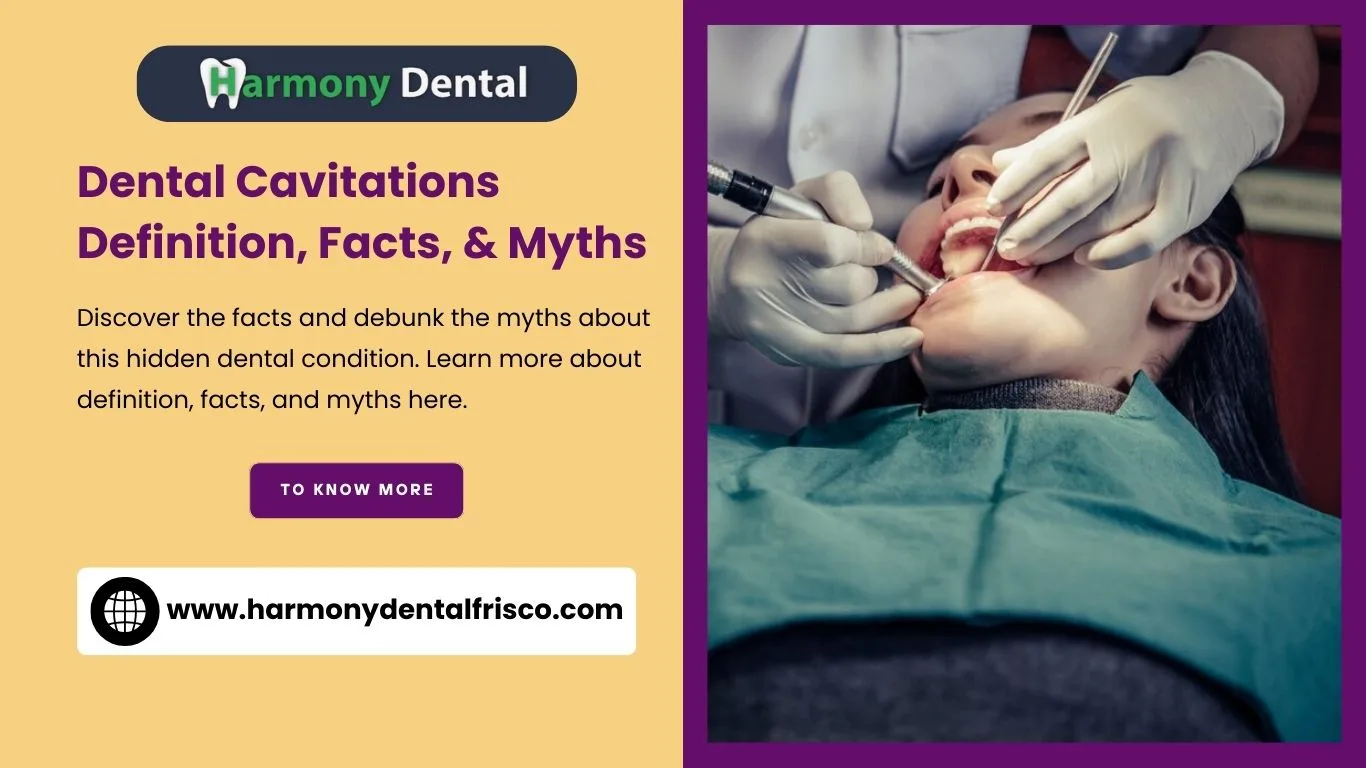Dental Cavitations – Definition, Facts, & Myths
Dental cavitations are hollow areas or pockets in the jawbone that develop after a tooth extraction or root canal treatment.
These cavities can harbor bacteria and other pathogens, potentially leading to chronic infections and other health issues. Unlike cavities in teeth, which are visible and cause pain, dental cavitations are often hidden and asymptomatic, making them harder to diagnose.
Facts About Dental Cavitations
Formation: Dental cavitations typically form after tooth extraction or failed root canal treatments. Improper healing or incomplete removal of the periodontal ligament can lead to these hollow spaces.
Diagnosis: Diagnosing dental cavitations can be challenging. They often don’t show up on standard dental X-rays. Specialized imaging techniques, like cone beam computed tomography (CBCT), are more effective in detecting these hidden areas.
Symptoms: Many people with dental cavitations may not experience any symptoms. However, some might notice chronic pain, discomfort, or unexplained health issues. The presence of bacteria in cavitations can lead to systemic health problems if left untreated.
Treatment: Treatment for dental cavitations involves surgical intervention to clean out the infected area and promote proper healing. This process may include removing necrotic bone tissue and applying biocompatible materials to stimulate bone regeneration.
Myths About Dental Cavitations
Myth: Dental Cavitations Are a New Discovery
Fact: Dental cavitations have been recognized in the dental field for many years. However, their diagnosis and treatment have become more advanced with improved imaging technologies.
Myth: Only People with Poor Oral Hygiene Get Cavitations
Fact: While poor oral hygiene can contribute to dental issues, dental cavitations are often the result of surgical procedures like tooth extractions or root canals. Even individuals with excellent oral hygiene can develop cavitations.
Myth: Dental Cavitations Are Always Painful
Fact: Many dental cavitations are asymptomatic, meaning they don’t cause pain or discomfort. This can make them difficult to detect without specialized imaging.
Myth: Cavitations Are Just Another Term for Cavities
Fact: Cavitations and cavities are different. Cavities refer to decay in the teeth, while cavitations are hollow spaces in the jawbone. Both conditions require different diagnostic approaches and treatments.
Understanding dental cavitations is essential for maintaining optimal oral health. While they can be challenging to diagnose and treat, advancements in dental technology have made it easier to detect and address these hidden issues. If you’ve had tooth extractions or root canal treatments and are experiencing unexplained health issues, it might be worth discussing the possibility of dental cavitations with your dentist.
Here’s to a brighter, healthier smile with Harmony Dental!

